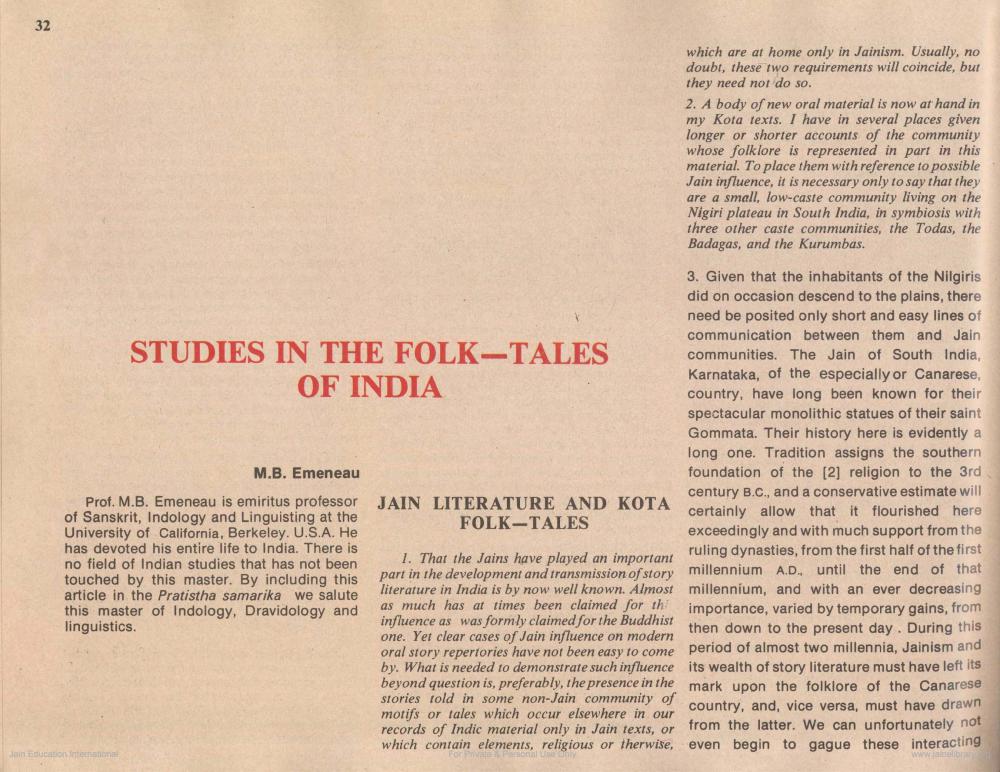________________
32
Jain Education International
which are at home only in Jainism. Usually, no doubt, these two requirements will coincide, but they need not do so.
STUDIES IN THE FOLK-TALES OF INDIA
3. Given that the inhabitants of the Nilgiris did on occasion descend to the plains, there need be posited only short and easy lines of communication between them and Jain communities. The Jain of South India, Karnataka, of the especially or Canarese, country, have long been known for their spectacular monolithic statues of their saint Gommata. Their history here is evidently a long one. Tradition assigns the southern foundation of the [2] religion to the 3rd century B.C., and a conservative estimate will
M.B. Emeneau
FOLK-TALES
exceedingly and with much support from the
Prof. M.B. Emeneau is emiritus professor JAIN LITERATURE AND KOTA certainly allow that it flourished here of Sanskrit, Indology and Linguisting at the University of California, Berkeley. U.S.A. He has devoted his entire life to India. There is no field of Indian studies that has not been touched by this master. By including this article in the Pratistha samarika we salute this master of Indology, Dravidology and linguistics.
1. That the Jains have played an important part in the development and transmission of story literature in India is by now well known. Almost as much has at times been claimed for th influence as was formly claimed for the Buddhist one. Yet clear cases of Jain influence on modern oral story repertories have not been easy to come by. What is needed to demonstrate such influence beyond question is, preferably, the presence in the stories told in some non-Jain community of motifs or tales which occur elsewhere in our records of Indic material only in Jain texts, or which contain elements, religious or therwise,
ruling dynasties, from the first half of the first millennium A.D., until the end of that millennium, and with an ever decreasing importance, varied by temporary gains, from then down to the present day. During this period of almost two millennia, Jainism and its wealth of story literature must have left its mark upon the folklore of the Canarese country, and, vice versa, must have drawn from the latter. We can unfortunately not even begin to gague these interacting
For Private Personal only
www.jaslibrary
2. A body of new oral material is now at hand in my Kota texts. I have in several places given longer or shorter accounts of the community whose folklore is represented in part in this material. To place them with reference to possible Jain influence, it is necessary only to say that they are a small, low-caste community living on the Nigiri plateau in South India, in symbiosis with three other caste communities, the Todas, the Badagas, and the Kurumbas.




